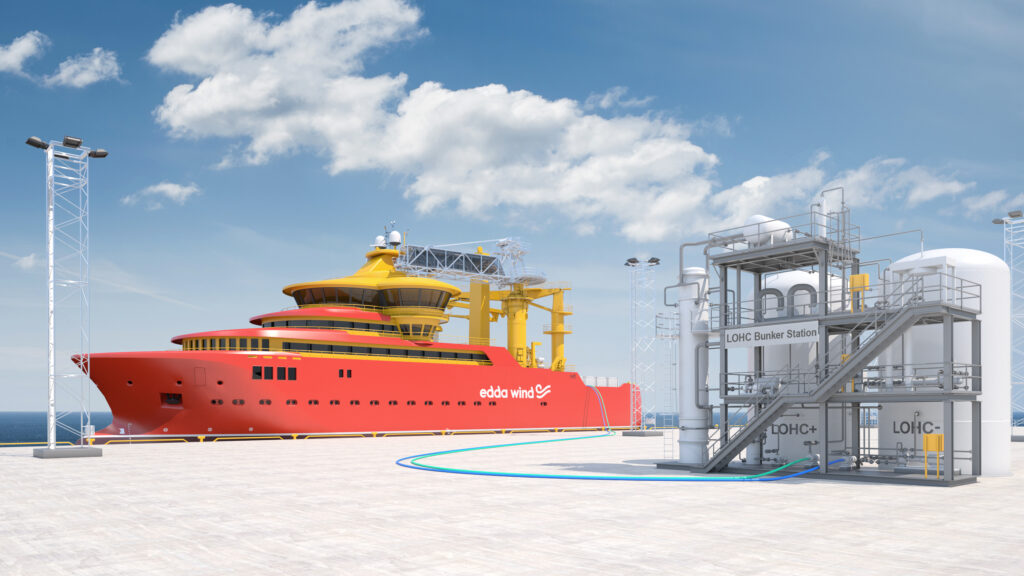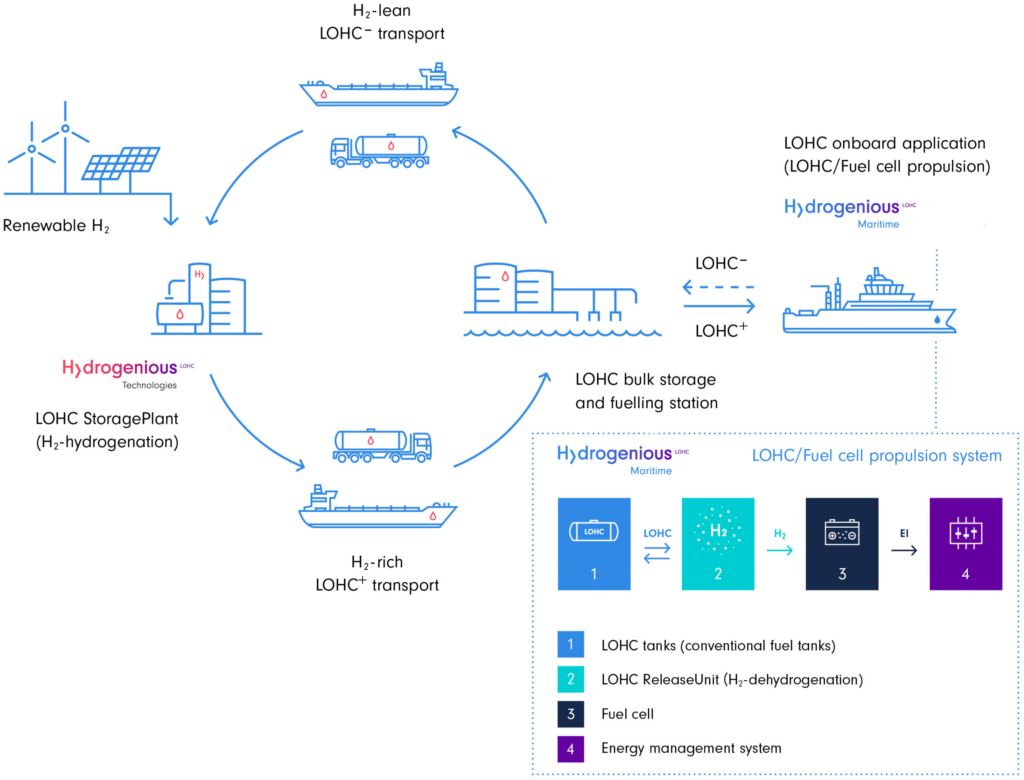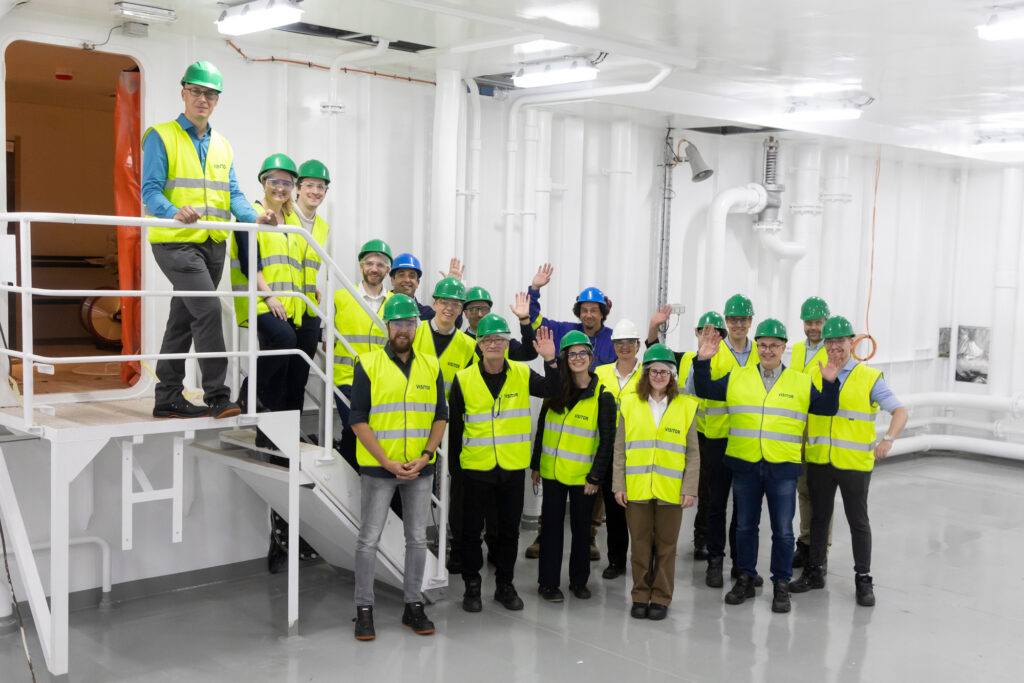As our planet is heating up, the shipping industry faces increasing pressure to cut its greenhouse gas emissions. Ship-aH2oy aims to develop a safe and scalable solution for zero-emission shipping based on Liquid Organic Hydrogen Carrier (LOHC) and fuel cell technology.

A first-of-its-kind 1 megawatt LOHC-based power system will be installed and demonstrated onboard an existing offshore wind vessel to enable zero-emission operations.
A replication study will assess the potential for larger systems and adaption to other shipping segments, including ROPAX vessels.
Launched in 2023, Ship-aH2oy is a European research and innovation project backed by a strong consortium of industry and R&D partners.
EU has awarded the project €15 million in funding through the Horizon Europe program as part of its drive to decarbonize the maritime industry.
Bringing Hydrogen Safely to Sea
Liquid organic hydrogen carrier (LOHC) is a liquid that can bind and release hydrogen through catalytic reactions. In contrast to gaseous or liquid hydrogen, LOHC can be stored and transported safely at ambient conditions.
Our chosen LOHC, benzyltoluene (BT), is a familiar industrial product. It is non-explosive, hardly flammable, and compatible with existing fuel infrastructure and familiar bunkering procedures.

Onboard the ship, hydrogen is released directly into the fuel cells in an LOHC release unit to generate power with zero emissions. Molecular hydrogen in the ship is kept to a minimum. The spent LOHC is kept in a separate tank and can be reused over and over.
A Scalable Solution
In Ship-aH2oy, 1 MW power unit consisting of hydrogen fuel cells, LOHC release unit and auxillary systems will be installed and demonstrated onboard a commissioning service operation vessel (CSOV) owned by Edda Wind. This will be the first large-scale maritime demonstration of LOHC.
The demonstrator ship is part of Edda Wind’s fleet of CSOVs built to support the global offshore wind sector. The vessels are all designed with dedicated space for the future installation of LOHC tanks and power system.

A Strong Consortium
Ship-aH2oy is backed by a comprehensive consortium of industry and R&D partners united by a strong commitment to realising zero-emission shipping.
The consortium covers the whole value chain from design offices and class society to shipbuilders, owners and operators. Meet our partners.
Still curious?
Head over to our FAQ for more information…
…or get in touch!
